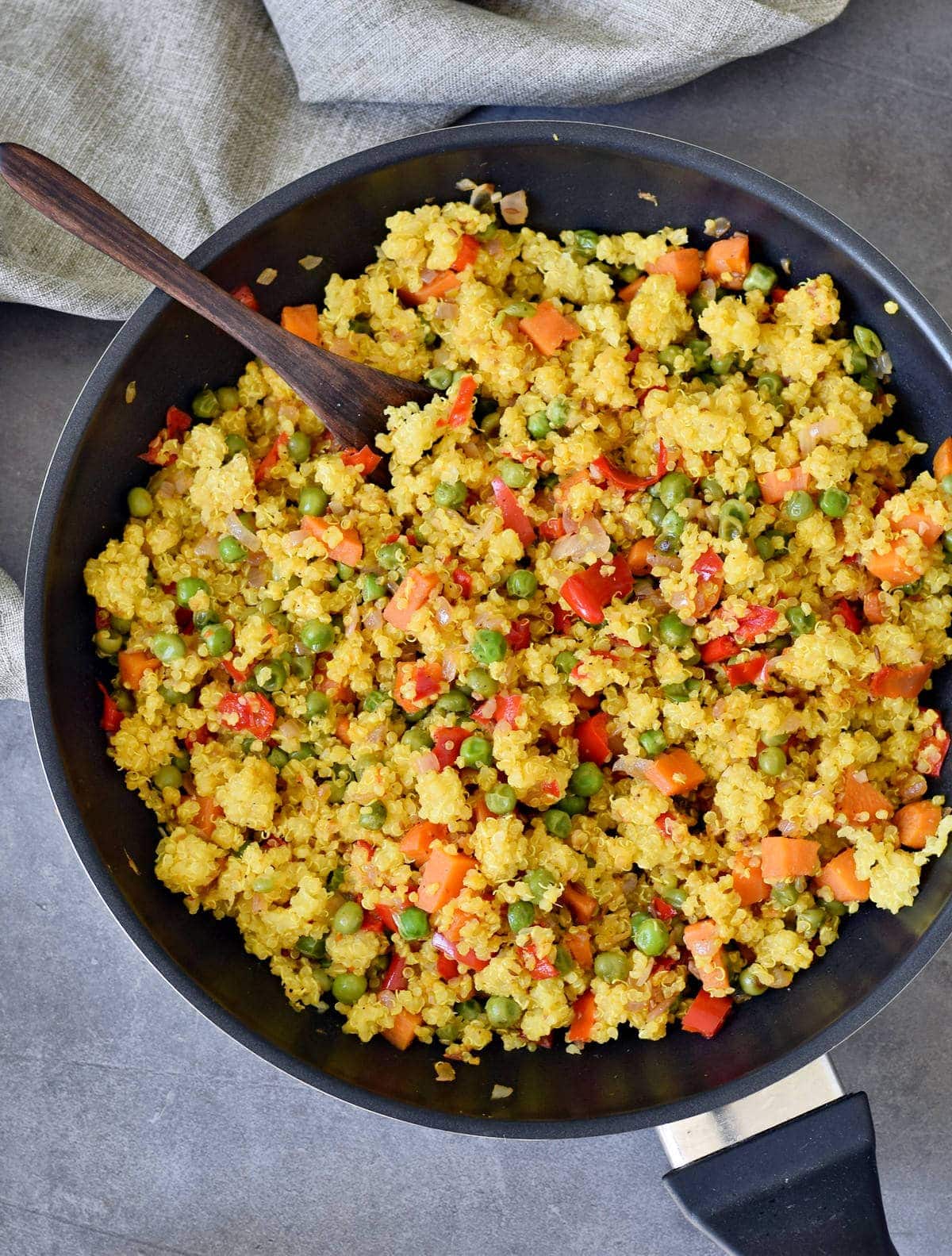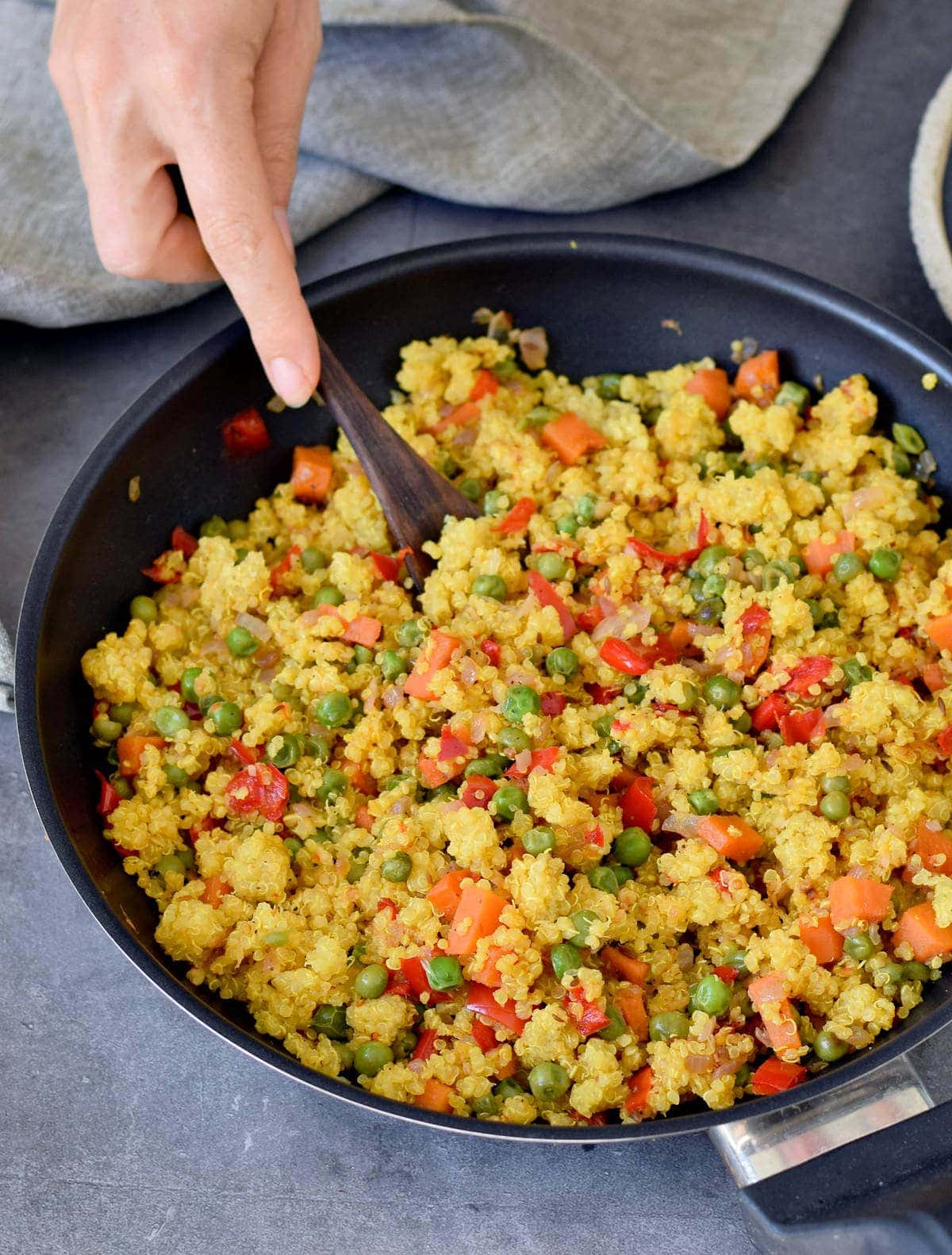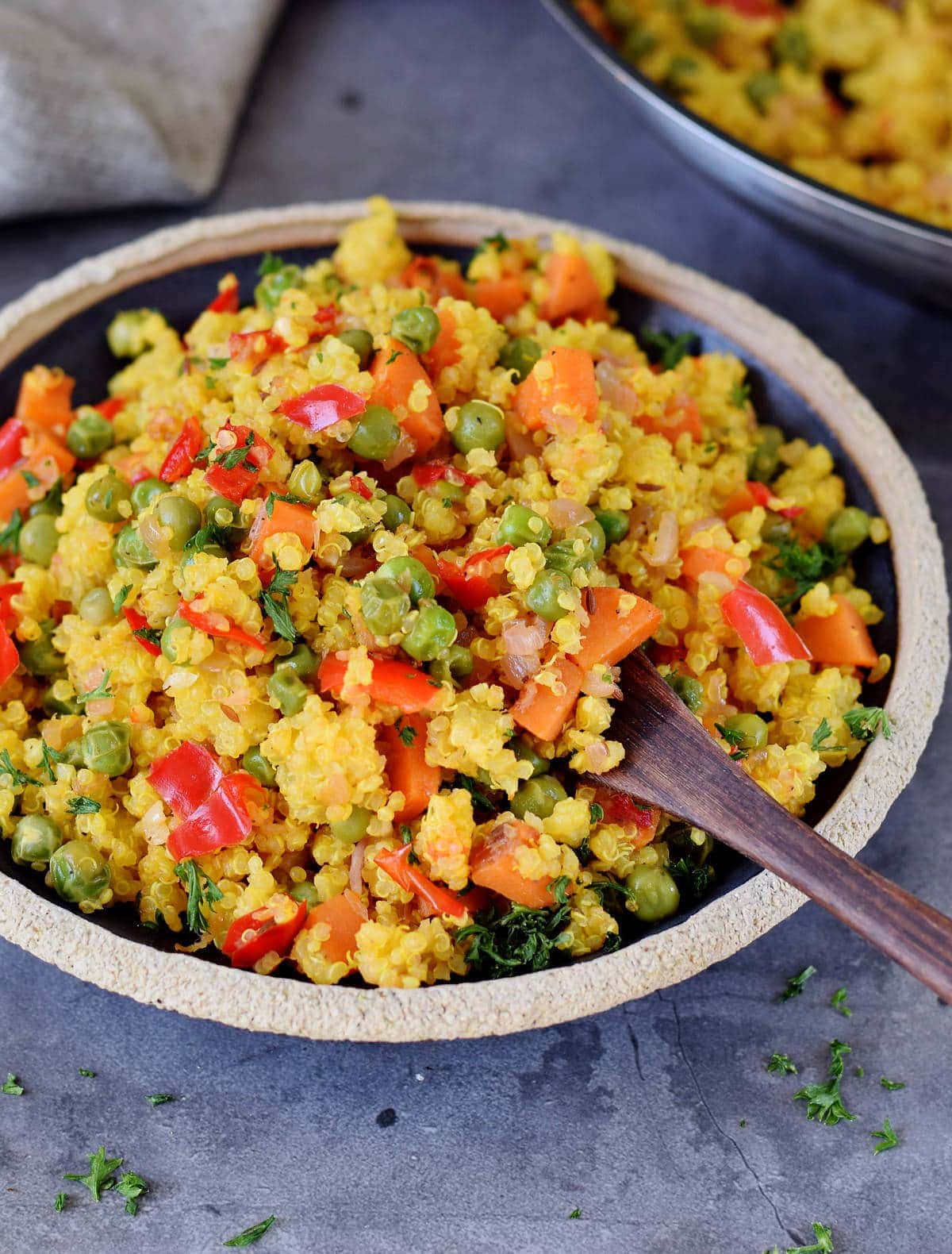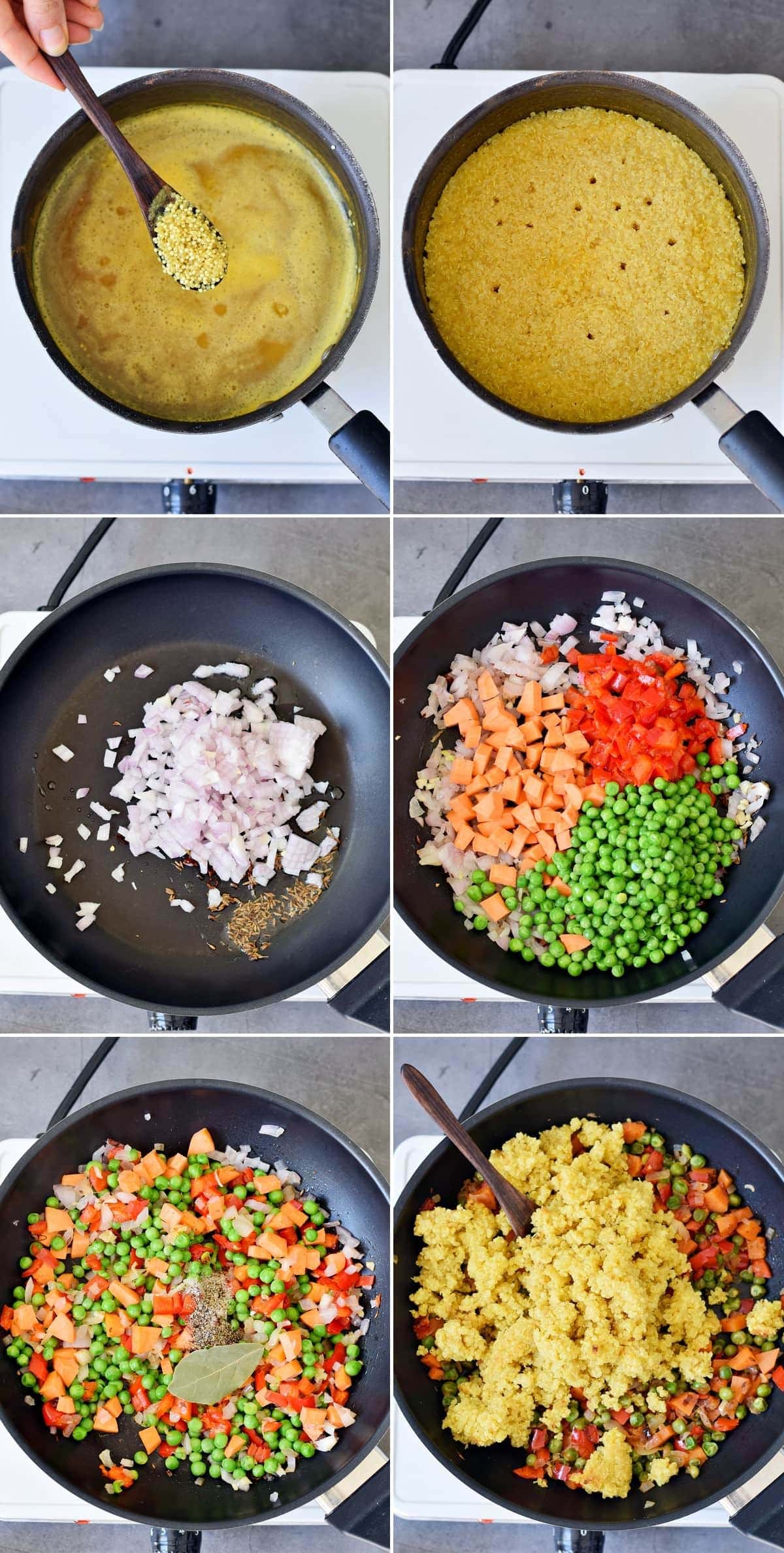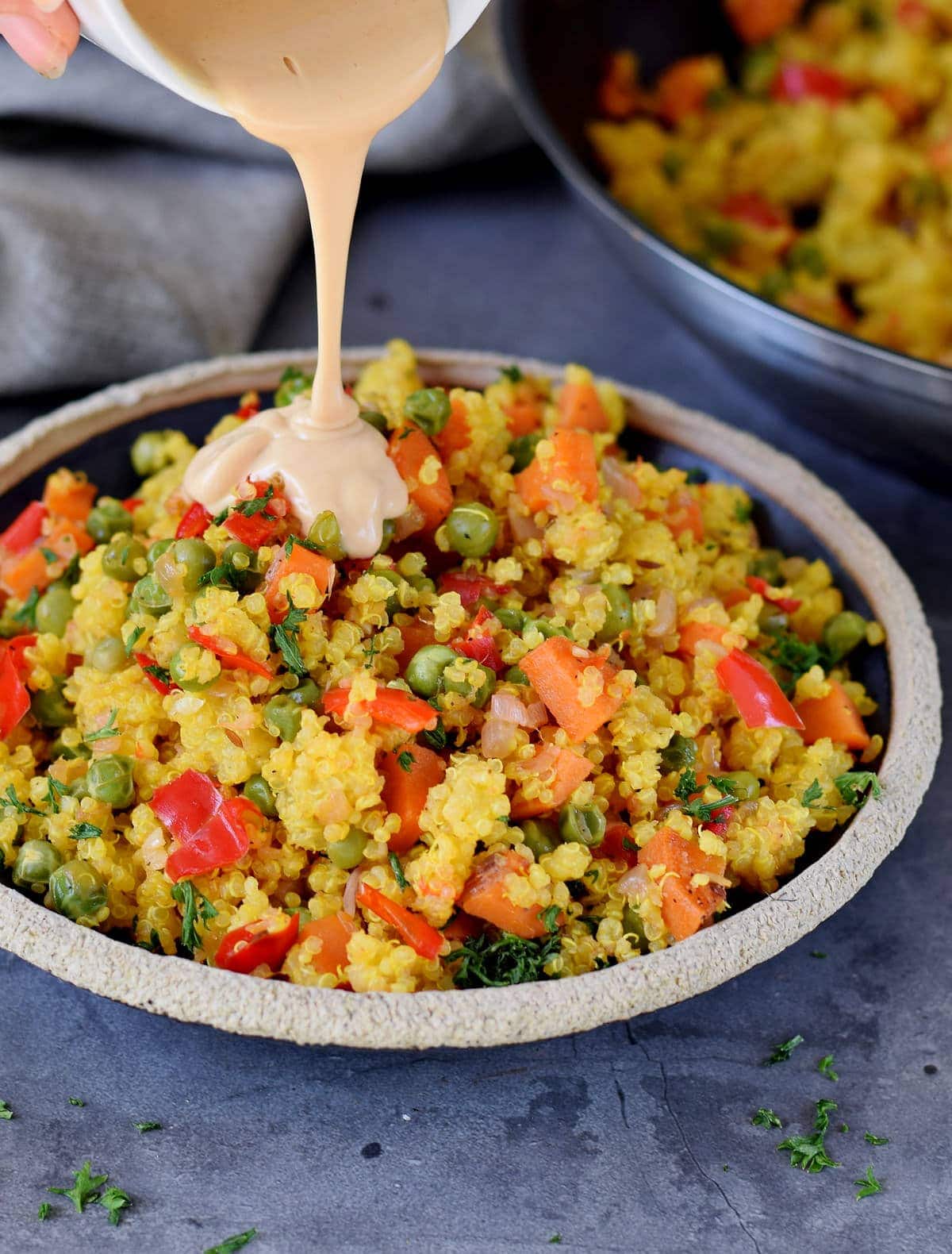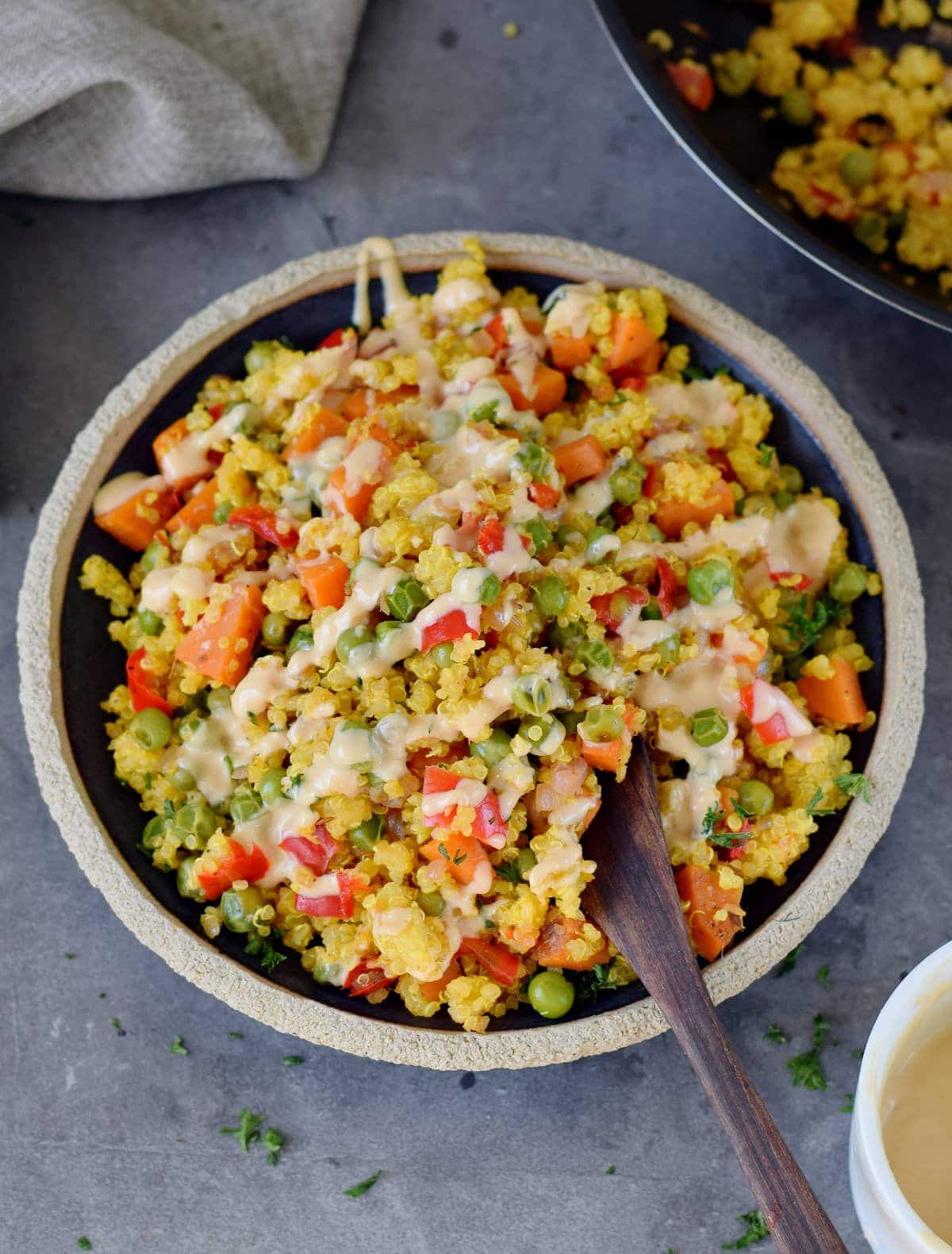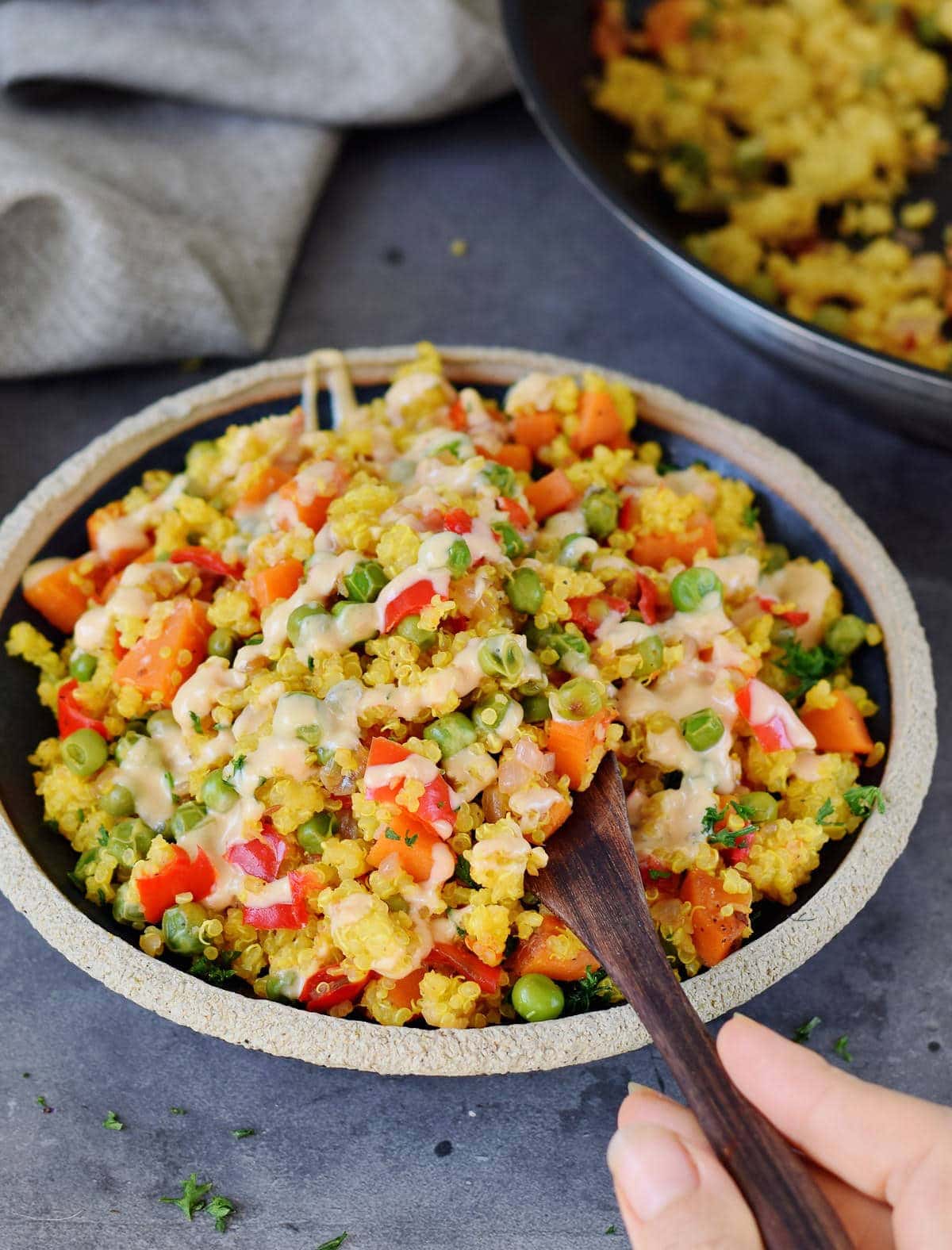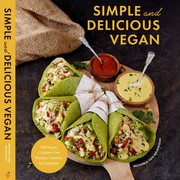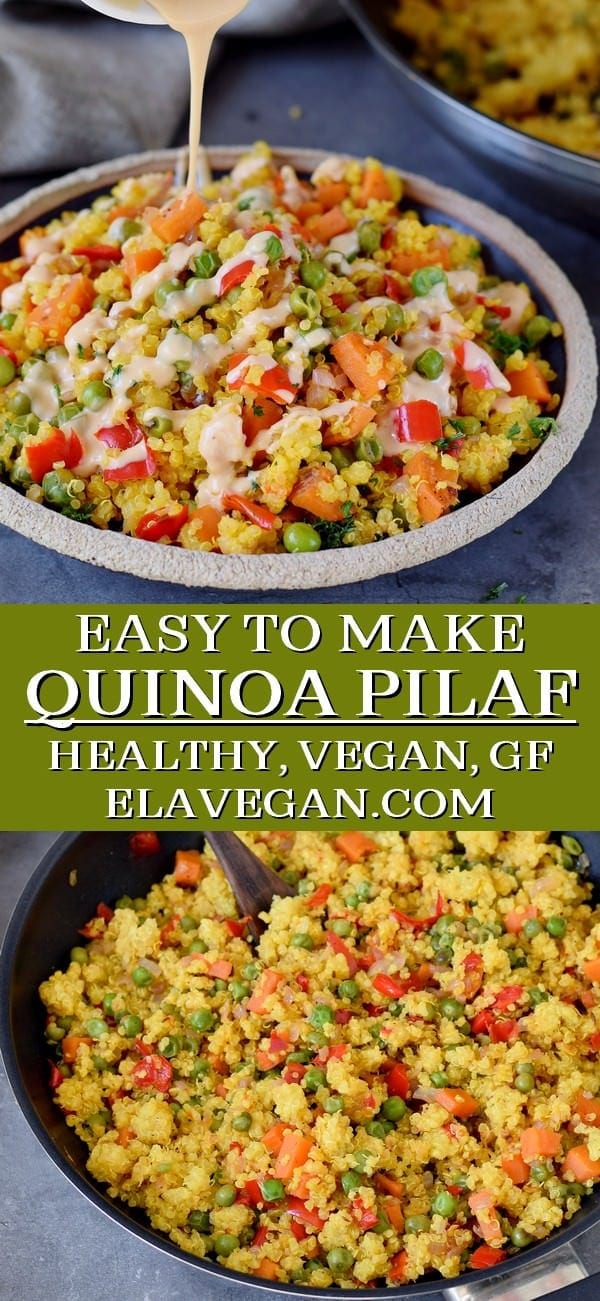What is Quinoa?
Quinoa (pronounced keen-wah) is touted as an ‘ancient grain’ going back to Inca times. There it was labeled ‘the mother of all grains’ and is very nutritionally impressive. However, even though we commonly refer to it as a whole grain, quinoa is not a grain at all – in fact, it is a seed! Quinoa has a nutty flavor and a slightly chewy, firm texture. It is used as an alternative to rice and other grains in several dishes. There are three varieties, including white, red, and black. They all differ slightly in taste and texture.
Quinoa Is Healthy
What makes this ingredient so popular, though (for all varieties), is its extraordinary nutritional value. Quinoa is one of the best plant-based sources of complete protein (a rare find!) – containing all eight essential amino acids. Not to mention that it is packed with fiber, iron, magnesium, phosphorus, zinc, Vitamin E, etc. The seed is also naturally gluten-free, cholesterol-free, high protein, high in antioxidants, and low GI. Also, the majority is grown naturally organic since the saponin coating repels critters. All this combined makes this ingredient the perfect healthier substitute to white rice, pasta, couscous, etc. And thus, it makes for a delicious “fried rice” alternative in this healthy quinoa pilaf recipe.
What Is Pilaf?
Pilaf (also called Pilau), is traditionally a Middle Eastern rice dish. The grains are cooked in a flavorful stock or broth, with additional spices (often saffron but now turmeric, which gives the grains a lovely yellow color), vegetables, and sometimes meat. The method of cooking pilaf is so that the grains remain separate, with absolutely no stickiness, or mush. The results are a light and flavorful, fluffy rice dish. Over time, we are now making pilaf with several grains and even quinoa, and it can be made with minimal ingredients (I.e., olive oil and garlic). Or into a delicious meat-free quinoa stir-fry with lots of vegetables, as I do.
How To Cook Quinoa?
Quinoa is incredibly easy to cook and follows a similar process to various grains. Once cooked, quinoa swells between 3-4x its size and becomes more translucent. It should also have a slight ‘al-dente’ bite to it, similar to a slightly chewy couscous, with a nuttier flavor and fluffy consistency. Like rice, quinoa absorbs the surrounding flavors, which is why I love to serve it in dishes like this flavorful, quinoa pilaf recipe. However, it’s important to note that there is one step needed pre-cooking that is imperative to good quinoa, and that is rinsing! As I mentioned above, quinoa has a bitter saponin coating that needs to be rinsed before cooking. Some brands are pre-rinsed, and so you can skip this step, but I prefer to rinse it regardless. Simply place the quinoa in a fine-mesh sieve and rinse until the water runs clear. Many packets will state a 1:2 ratio of quinoa to water, but for fluffier results I always suggest:
1 Cup of Quinoa Per 1 ¾ Cup Water or Stock
This can then be brought to a boil, and reduced to a simmer for around 15 minutes, or until tender. However, for the full details on how to cook the quinoa for this quinoa stir fry, then read the recipe below.
How To Make Quinoa Pilaf
This simple quinoa recipe with vegetables can be pulled together in under half an hour. It is fairly low effort for those days you don’t feel like fiddling too much in the kitchen. In fact, the entire recipe is made up of just six steps! Step One: Thoroughly rinse the quinoa in a fine-mesh sieve until the water runs clear. You may not need to do this if the brand you use is pre-rinsed. Step Two: Add the quinoa, water, salt, and turmeric to a medium pot and bring to a boil. Cover the pan with a lid and reduce the heat to low/medium. Simmer for around 15 minutes, or until the water has absorbed and the quinoa is tender. Step Three: Meanwhile, as the quinoa cooks, prepare the vegetables (finely dice all vegetables, including the sweet potato, so that they cook faster). Heat the oil in a large skillet. Once hot, add the cumin seeds and chili (if using) and lightly toast for a minute or so. Step Four: Add the onion and sauté for 3 minutes then add the ginger, garlic, all vegetables, bay leaf, and salt and pepper. Stir well to thoroughly combine. Step Five: Add the vegetable broth to the skillet, cover with a lid, and leave the vegetables to cook over low heat until tender (around 7-10 minutes). Step Six: Turn off the heat, add the quinoa to the large skillet and mix well. Pour in the lemon or lime juice and give it one final stir, then serve immediately, garnished with fresh herbs. For the full ingredients list, ingredient measurements, and nutritional information, then please read the printable recipe card below.
This Quinoa Recipe Is:
Protein-rich Naturally organic Gluten-free Cholesterol free Antioxidant-rich Low GI Plant-based Super-versatile Great end-of-week meal for leftovers
Storing Instructions
Leftovers can be stored in airtight containers in the fridge for 2-3 days or even portioned and placed in the freezer for a few months. I’ll sometimes specifically make extra quinoa to freeze. Next time I want to make this quinoa recipe, all I need to do is thaw the quinoa and mix with the current leftover veggies and bits n’ bobs I have in my fridge.
How To Serve?
This quinoa “fried rice” tastes delicious when served hot or cold. It can be served as a side dish, part of a main meal, or light quinoa salad along with on a bed of greens. The quinoa stir fry also works incredibly well as a stuffing. Whether it’s for a mid-week meal like these Vegan Stuffed Eggplants, Vegan Stuffed Zucchini, or Stuffed Peppers. Alternatively, it can also work as a vegan thanksgiving stuffing. Quinoa pilaf with vegetables is also great to use cold within healthy pittas and wraps. It’s yummy with additional leafy greens and proteins like tofu or chickpeas.
Useful Tips & Variations
This quinoa side dish is the perfect way to use up all the leftovers in the fridge- veggies, tofu, etc. Making it a wonderful end-of-week meal. Following on from above, quinoa pilaf is incredibly versatile. Swap out the sweet potato for carrot or even add more veggies such as zucchini, broccoli, tomatoes, kale, corn, mushrooms, etc. For a yummy treat, add a liberal sprinkling of this Vegan Parmesan Cheese. Add some toasted pine nuts, almond flakes, or pumpkin seeds for additional crunch and nutrients. If serving cold, i.e., like a quinoa salad, then you can serve with a simple olive oil & lemon juice dressing. Or something creamy like this Vegan Potato Salad Dressing. When serving as a quinoa salad, I also love to add a lot more fresh herbs – cilantro, parsley, green onions, etc. Quinoa contains some phytic acid. Therefore, pre-soaking it overnight or even sprouting the quinoa is an optional step to reduce phytic acid, make the various minerals more bioavailable, and increase their antioxidant levels further. Add 1-2 tsp of Garam Masala for a curry flavor. You can also mix up the spices. Cayenne pepper will add heat, or smoked paprika brings a sweet smokiness to the veggie stir fry. Add dried raisins, sultanas, or apricots for a ‘jeweled’ version. Avoid cooking the quinoa on temperatures that are too low, or it may get too mushy.
Single-Pot Dish
It may be possible to cook this as a one-pot dish. However, the texture of the quinoa will likely not be quite as fluffy. Simply rinse the quinoa as normal, prepare the vegetables, and begin to sauté them in the pan. Then place the correct amount of water to quinoa ratio in the pan with the vegetables and simmer for 15 minutes, until the water has absorbed and the quinoa is cooked through. If you give this simple quinoa recipe a try, I’d really appreciate a comment and rating below. Also, don’t forget to tag me in re-creations on Instagram or Facebook with @elavegan and #elavegan. If you love quinoa, make sure to also check out my tasty Broccoli Quinoa Casserole recipe.
If you are using Pinterest, feel free to pin the following photo:

